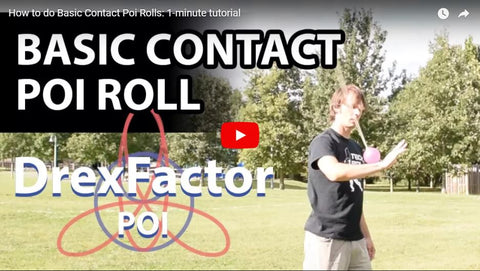Your Cart is Empty
Learn to Spin Poi
-
•Beginner Poi Tutorial Series
From the basics of how to hold poi all the way up to the three-beat weave. This is the course for the absolute beginner. We take things slow and use detailed lessons to show you exactly what you need to know to get the basics of poi under your belt! You can support the Poi artist (Drex) that makes these videos by visiting his website. - •Practice Makes Perfect
Nothing in life comes easy and with poi, you will need to put in some practice to advance. The good thing is you are an amazing human being and if you dedicate only days to the art you should be able to learn the basics and move on to more advanced techniques. - •Have Fun!
Don't beat yourself up to bad! Seriously watch out for that flying poi. (hehe) But all jokes aside, poi should be fun and not frustrating. If you are having trouble with a trick, switch it up and try something else. It will all come with time. - •Videos Help You Learn
Viewing others spinning poi can help you understand moves and complex styles quickly. Not to say you cant figure this out on your own, but our site and social media channels are packed with videos with amazing artist spinning poi.
How to Hold Poi
This video covers the parts and types of poi as well as the many ways that they can be held.
Poi Plane Control
This video covers planes--the definition of planes as we use them with poi, the most common planes we use with poi, and 3 exercises to help hone our plane control.
Poi Timing and Direction
Timing and direction is a system for understanding how two objects rotating around a third object can relate to each other. It’s hugely important for understanding the symmetry of how poi spinning works as well as giving a quick and easy way to explore new patterns once you learn them in a single timing and direction.
2-beats and Extensions for Poi
Pretty much all poi tricks fall into one of two categories (and sometimes both!): flat plane moves and plane bending moves. Here, we begin to work with each one by learning static spins and extensions as well as tic-tacs, switching the poi from one side of the body to the other.
Reel Turns for Poi
Turning with your poi is a critical skill for being able to move freely with them. In this video, we’ll cover the basics of reel turns in all four timing and directions so you can begin to move with the prop!
Poi Tuck Turns
Now that you can turn with your poi, we’re going to add a bit of style to it! Tuck turns add a bit of pizazz to your turns as well as setting you up for more advanced poi techniques down the road like body tracers.
2-beat Weaves for Poi
Most of us come upon 2-beat weaves almost unintentionally when we begin to play with our poi. Here is a guide to how they are performed that will set you up for our next video: 3-beat weaves!
Poi 3-beat Weave
3-beat weaves are perhaps the most recognizable poi trick of them all! They’re also a huge hurdle for beginners to cross, but I have three methods here for breaking it down and making it easier to learn.
Butterflies and Thread the Needle for Poi
Butterflies are the first wall plane trick we’ve played within this series and they are one of the most recognizable tricks in the world of poi tricks! Here, we’ll cover how to perform them as well as how to perform their close cousins: thread the needle or TTN.







